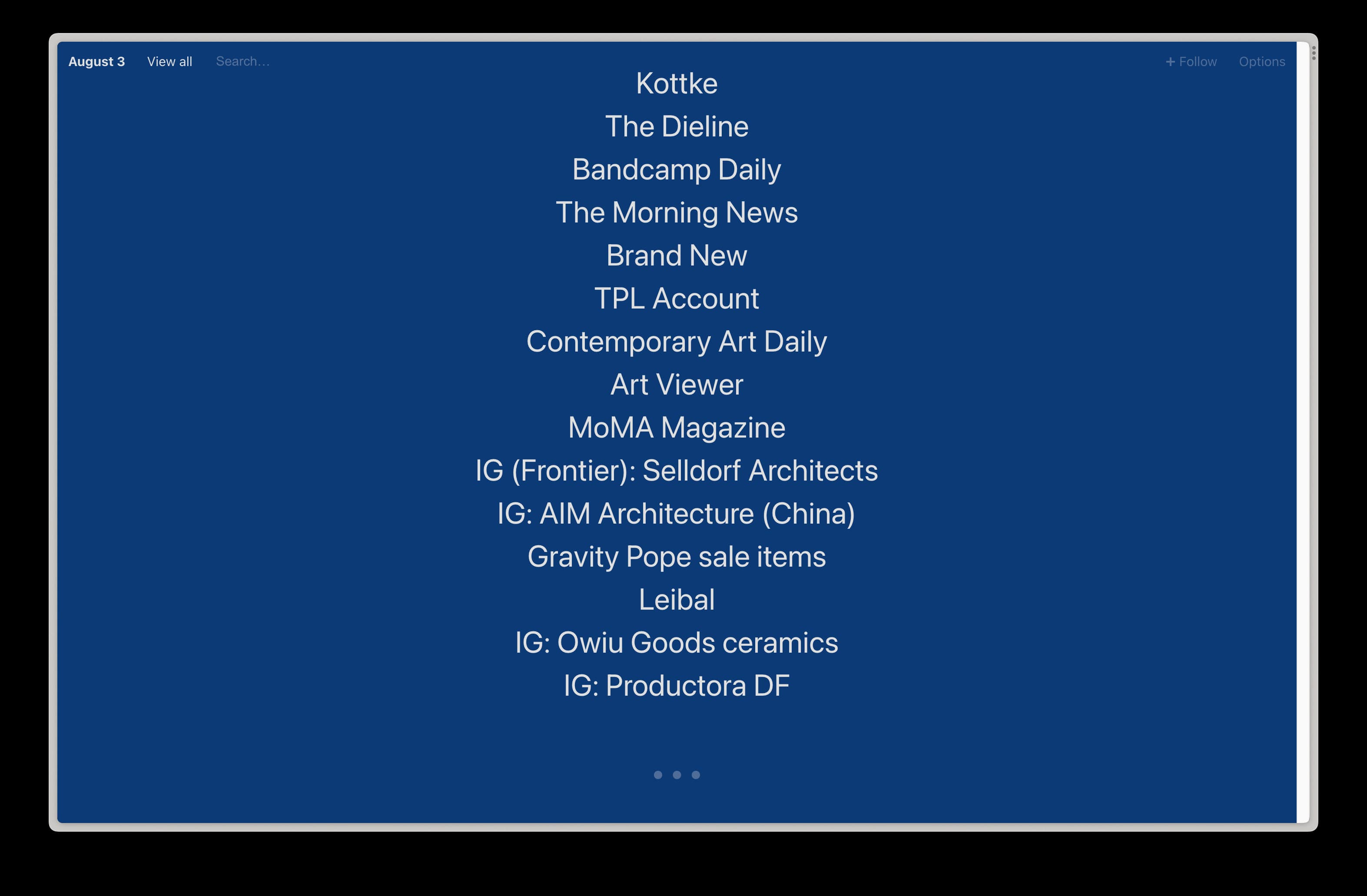Supporter Update 🤝🏻 August 4, 2023
A great tool for keeping up with websites and more

Hi everyone,
Several of you noticed that Frontier Magazine’s links point to dozens of sources and wrote in to ask how I keep up. First, I’m an inveterate reader, often to the exclusion of other artistic forms. (At the lunch table, my Frontier colleagues often laugh at my cluelessness about current TV and movies.) But I have also developed, over the years, a finely honed workflow for figuring out what’s new, what’s interesting, and how it relates to the topics I’m thinking and writing about.
I won’t bore you with the full details. But I do want to share a handy and under-appreciated tool I rely upon. I hope you consider using it and, if you do, you find it useful. As always, I’m one reply button or Substack comment away.
Love all ways,
Brian
PS—Some of you know that I have a deep background in contemporary art and photography. I’ll use the leading image in these updates to point you to remarkable artists whose work I’ve come to love. Click the links to see and learn more! 👩🏻🎨
Hardly Everything

Hardly Everything, by LA-based designer-developer Jon-Kyle Mohr, describes itself as “your feed with a cadence”:
Your feed closely resembles those already familiar—a scrolling list, at essence, but rather than algorithms determining what’s displayed we introduce timescales. You add things to this list, but when doing so prioritize their importance to you by defining a period of rest, long and short and everywhere in-between. […]
After clicking an entry, it disappears from your feed for the duration of its rest. Your feed updates once per day, there is never something new until tomorrow, a natural cycle, partitioned by a period of another kind of rest; sleep.
What does that mean in practice? I use it as a kind of variable-speed bookmarking tool, and have added the Instagram accounts of friends, the portfolios of design and architecture studios, the homepages of quarterly journals, the sale pages of stores where I like to shop, and more. I only see them when I want to: a friend’s Instagram account might pop up every two weeks, giving me a chance to peek in on their life, whereas I might visit a studio’s portfolio every six to nine months. Part of the fun is the random juxtaposition of links to click each day. I never know what I’ll be pointed to, but I always know it’s something I’ve chosen to follow.
The whole thing works by storing a little text file in your browser’s cache, then updating it every time you visit and click. Elegant, lightweight, independently produced, and totally reliable. What’s not to like?
Updates
More stories related to our issues.
Re: “The Neverending Story” (February 1)
🌐 In the New York Times Magazine, Jon Gertner writes about Wikipedia and generative AI, asking, “Is it already too late to live in a world where knowledge is created by humans?”
Re: “Workin’ on It” (May 31)
🌆 Kate Wagner uses the revelations about architect David Adjaye to meditate on unfair work practices in the field: “All of the elements that allowed Adjaye’s harm to go unpunished for so long are present in one way or another in all firms. They are inherent in the very culture of the discipline.”
Re: “Bad Moon Rising” (July 19)
🟣 Musician and writer Damon Krukowsi on a dome that should’ve made it onto our approval matrix, the Sonic Sphere in New York: “Meanwhile, the $2 million sphere did everything it could to try and hold our attention, like a ride in a fun fair.”
🎢 “But why would anyone wedge an amusement-park ride into a swank Manhattan hotel?” Design writer Karrie Jacobs on the little bit of Las Vegas coming soon to Manhattan.
Re: “Deep Dives” (August 2)
🎓 Matt Klein and Robert Cain argue “We can no longer rely upon institutions to be the sole providers of continued education.”





